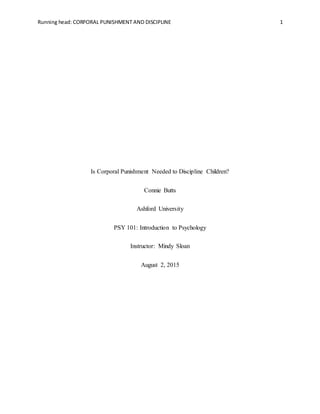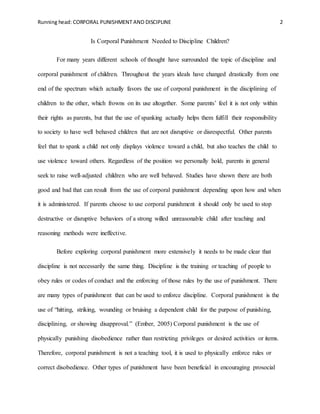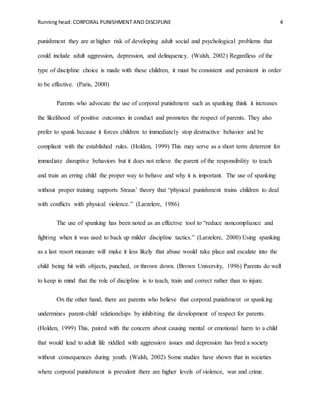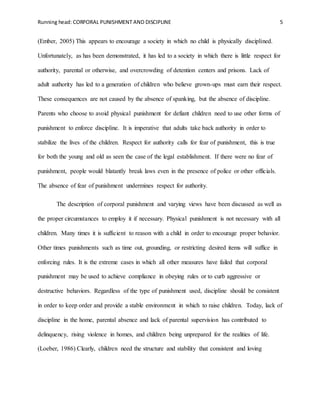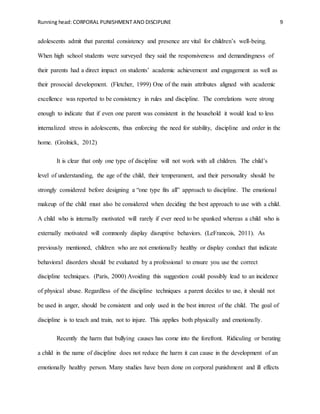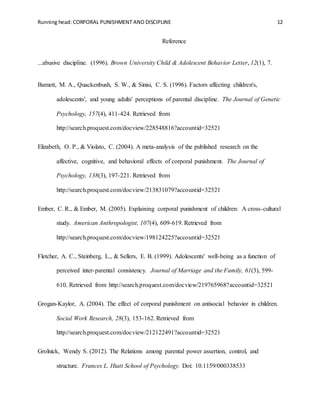This document discusses different perspectives on the use of corporal punishment in disciplining children. It summarizes research showing both benefits and risks depending on how corporal punishment is administered. Studies found that only harsh or frequent spanking was associated with negative effects, while mild or infrequent spanking showed minimal risks. The document concludes that the goal of discipline is to teach rather than punish, and that the most effective disciplinary approaches vary depending on the individual child and situation.
